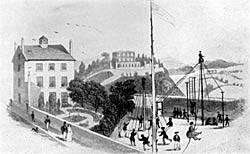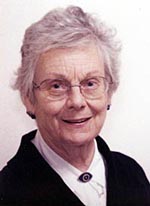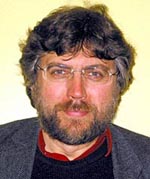Recent events and lectures, Winter 2004/05
 |
| Standard Hill Academy, 1848. |
REPORTS OF RECENT LECTURES AND EXCURSIONS
13 November 2004: The Nottinghamshire History Lecture: Dr Paul Elliott – ‘British Enlightenment Culture in a Regional Centre’: Scientific Personalities, Ideas & Institutions in Nottingham c1700-1840’
Dr Elliott has concentrated most of his research activity in this region, so while 'enlightenment culture' was not a closed book to many of the audience, he was able to shed considerable new light on the subject. The number of societies in Nottingham alone - literary, philosphical, agricultural and scientific - makes one realize what there was to occupy people’s lives before media, television and cinema. Many societies met in establishments such as the Nottingham Mechanics Institute and Nottingham Subscription Library, which also had their own special interest groups. The 18th and early 19th century saw a growing interest in scientific and technical advances, and was the heyday of itinerant public lecturers who thought nothing of transporting sheep's heads, working models of cranes and demonstrations of astronomical discoveries.
Some of these lecturers began by running private educational establishments: Charles Wilkinson, whose Nottingham Academy, founded 1777, occupied land between what is now Parliament Street and Foreman Street. In that year Robert Goodacre was born, who, aged 20 started a day school, also in Parliament Street, which later moved and became the Standard Hill Academy. Goodacre was particularly interested in astronomy, and was a prime example of the itinerant lecturer; in London, Yorkshire, Scotland, the Channel Islands and a 4-year tour of America; the logistics of this in the 1820s gives food for thought. Paul has assembled a mass of material - perhaps more from him in the future? Neville Hoskins
 |
11 December 2004: Dr Rosalys Coope – ‘Newstead: The First Lord Byron’s “Great Dining Room”’
We were privileged to have as our December speaker Dr Rosalys Coope, Vice-President of the Society [pictured right]. Rosalys has studied Newstead Abbey for many years and is a renowned expert on this jewel of the Nottinghamshire countryside. Her subject on this occasion was the First Lord Byron’s Great Dining Room. The lecture explored the room’s many incarnations, from starting out as the refectory for the Augustinian canons, and being remodelled into a grand room by Sir John Byron in the 17th century. Changes have taken place over the centuries, and we were shown how the room had looked, and what remains today in what is now known as the Salon. Intriguingly, there is more to be found, and Rosalys will be back to Newstead seeking clues as to what might have happened to some of the more decorative features, which are currently lost. We look forward to hearing about any further finds. Many thanks go to Dr Coope, and also to Elizabeth and Margery who served us deliciously warm mulled drinks and mince pies to mark the festive season! Barbara Cast
 |
8 January 2005: The Nora Witham Lecture: Dr Paul Bahn - ‘Palaeolithic cave art at Creswell Crags’
Dr Bahn spoke of Nottinghamshire 14,000 years ago in a glacial environment in which, without his fluency, we might have felt too alien. The story of the discovery of the first British cave art at Church Hole at Creswell Crags in Spring 2003 is of Paul’s determination to find it, his forming a three-man team with archaeological friends Paul Pettitt and Sergio Ripoll, and the coincidence of the team starting at Creswell with the unpromising north-facing Church Hole cave.
The first discoveries were some dozen animals with outlines engraved into the limestone walls by flint tools. Another session examining every square inch of the cave in the light of Spring 2004 recognized some 80 bas-relief sculptures on the ceiling at the cave’s front, the richest conglomeration of this type of art in all Europe. As found on the continent, the Creswell figures are all of animals - bison, horses, deer, and birds - with some abstract or stylised designs. Creswell Crags Museum and Education Centre is now working with the British Museum and other local and national organizations on new facilities to welcome visitors to see the cave art and the rich collections of excavated archaeological finds left by those who produced the art. These new facilities will not be available until at the earliest 2007, but Society members may arrange their own visits this year between 26th March - 10th April, 28th May - 12th June and 27th August - 11th September. Places are limited, so if you wish to visit contact the Cresswell Heritage Trust on 01909 720378, or via their website www.creswell-crags.org.uk. Leslie Cram